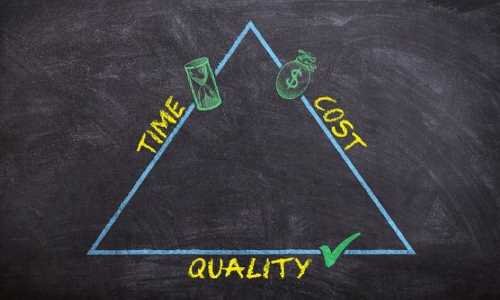In fixed costs definition case studies, a fixed cost is a cost that does not change with an increase or decrease in the measure of goods or services delivered or sold.
Fixed Costs Definition Case Studies:
Fixed costs are expenses that must be paid by an organization, independent of any business activity.
It is one of the two parts of the combined cost of maintaining a business, alongside factor cost.
Analyzing ‘Fixed Costs’ Definition Case Studies:
A fixed cost is a working expense of a business that can’t be stayed away from paying little respect to the level of creation.
Fixed costs are utilized as a part of the breakeven analysis to decide to evaluate and the level of creativity and deals under which an organization produces neither profit nor misfortune.
Fixed costs and variable costs shape the aggregate cost structure of an organization, which assumes an essential part in guaranteeing its profitability.

Cases of Fixed Costs:
Bookkeepers perform deep analyses of various expenses to decide if they are variable or fixed.
Higher fixed costs in the aggregate cost structure of an organization expect it to accomplish more elevated amounts of revenues to make back the initial investment.
Fixed costs must be brought about routinely, and they tend to demonstrate little changes from period to period.
Cases of fixed costs incorporate insurance, interest expense, property charges, utility expenses, and devaluation of advantages.
Additionally, if an organization pays yearly pay rates to its representatives independent of the number of hours worked, such pay rates must be considered fixed costs.
An organization’s rent on a building is another basic case of fixed costs, which can retain critically subsidized particularly for retail organizations that lease their store premises.
Fixed Costs and Economies of Scale:
A business must bring about factors and fixed costs to create a given measure of goods.
Variable costs per thing remain moderately level, and the aggregate variable costs change proportionately to the number of item things created.
Fixed costs per thing decrease with increases underway. In this manner, an organization can accomplish economies of scale when it delivers enough goods to spread a similar measure of fixed costs over a bigger number of units created and sold.
For instance, a $100,000 rent spread out more than 100,000 gadgets implies that every gadget conveys with it $1 in fixed costs. On the off chance that the organization produces 200,000 gadgets, the fixed cost per unit drops to 50 pennies.
Organizations with expansive fixed costs and unaltered variable costs in their generation procedure tend to have the best measure of working influence.
This implies after an organization accomplishes the breakeven point, all else that meet any further increases in a deal will deliver higher profits to the extent to deals increase for an organization up to a point where fixed costs per unit sold to wind up noticeably immaterial.
On the other hand, decreases in deal volume can create unequal higher decreases in profits.
A case of organizations with high fixed cost parts are service organizations, which need to make expansive interests in infrastructure and have in this way vast devaluation expenses with moderately stable variable costs per unit of power created.
Read Also: 11 Low-Cost Small Business Ideas with High Profit.

What is meant by Fixed Costs? Definition and Case Studies:
The long time contracts that have fixed payments of rent, interest on loans, salaries of contracts, also include fixed costs.
Each month a firm stands at the bottom of a financial hole. If the firm is not producing anything but legally required payments, that is equal to the value of the dollar is called “Cash Drain”.
Any firm with these fixed costs financial hole has to ask a question from itself by staring upward and looking for a way out of this hole.
“will this hole be deeper by producing any output?”
Generating Private cash flows to counteract fixed costs:
By generating positive cash flows the firm can hope for producing output that will fill the hole and balance its fixed costs.
If those positive flows are large enough, they may completely offset the firm’s fixed costs and fill up the hole, thereby allowing the firm to break even.
If the cash flows are a little larger then it can fill up the hole and also collect the small castle of profit.
Ground realities and fixed costs:
But those are just the firm’s hopes. The firm’s reality may be quite unpleasant. A particular firm’s financial situation may be worse rather than better by producing any outputs.
As explained in this chapter, if the price of the firm’s output falls too low, then producing output will yield cash flows that are negative rather than positive because revenues will be less than variable costs.
If that happens, producing output will lose money for the firm so that the firm would be better off shutting down production rather than producing output.
By shutting down, it will lose only its fixed costs. By shutting down, its financial hole won’t get even deeper.
Unaccomplished Fixed costs ultimately lead to the shutdown:
There are critical things to understand that if the low prices are the reasons for a shutdown for firms. If the productions are temporary then the shutdowns are also often temporary.
It does not mean that a firm will go out of business because of temporary shutdowns to prevent the firm’s financial hole.
On the opposite side, many firms are depending on market prices for their output and accordingly switching their productions On and Off, even if it will cause a positive or negative transfer of cash.
Various cases of Limiting Fixed costs Definition Case Studies:
(1): Oil production is a good example. Different wells have different variable production costs.
If the price of oil drops below a given well’s variable costs, then it would be better to halt production on that well and just lose the value of its fixed costs rather than pumping oil whose variable costs exceed the revenue that it generates when sold.
(2): Seasonal resorts are another good example of turning production on and off depending on the price.
The demand for hotel rooms near ski resorts in New Hampshire, for instance, is much higher during the winter ski season than it is during the summer.
So during summer many resorts and inns have a low market price rate and many hotels are closed during summer.
They have all sorts of fixed costs, but it makes more sense for them to shut down rather than remain open because operating in the summer would cost more in variable costs than it would generate in revenues. Better to lose only their fixed costs.
(3): A lot of examples are there of the temporary shutdown of the firms during slowdown time.
When the demand for goods and services goes down is also known as the uncommon economy as a whole.
The 2007–2009 recession in the United States, for instance, saw many manufacturing companies temporarily shut down and mothball their production facilities.
(4): The recession witnessed the mothballing of electric generating plants, factories that make fibre optic cable, automobile factories, chemical plants, textile mills, and even the plant in McIntosh, Alabama, that makes the artificial sweetener Splenda.
To wait out the recession many firms have also shut down their productions. There is a small crash for consulting firms that are specialized in helping firms by shelving their factories (the main problem is how to properly store idle machinery so that it will work again when it is eventually brought back into service).
(5): Firms that mothball factories or equipment during a recession do so expecting to eventually turn them back on.
But the lengths of recessions vary, as do the specific circumstances of individual firms. So while many firms shut down in the short run with the expectation of reopening as soon as their particular business conditions improve, sometimes their business conditions do not improve.
The termination of firms has only the way is to terminate the fixed. In short, the only solution is to plan your business in a way that fixed costs are easily met.






















